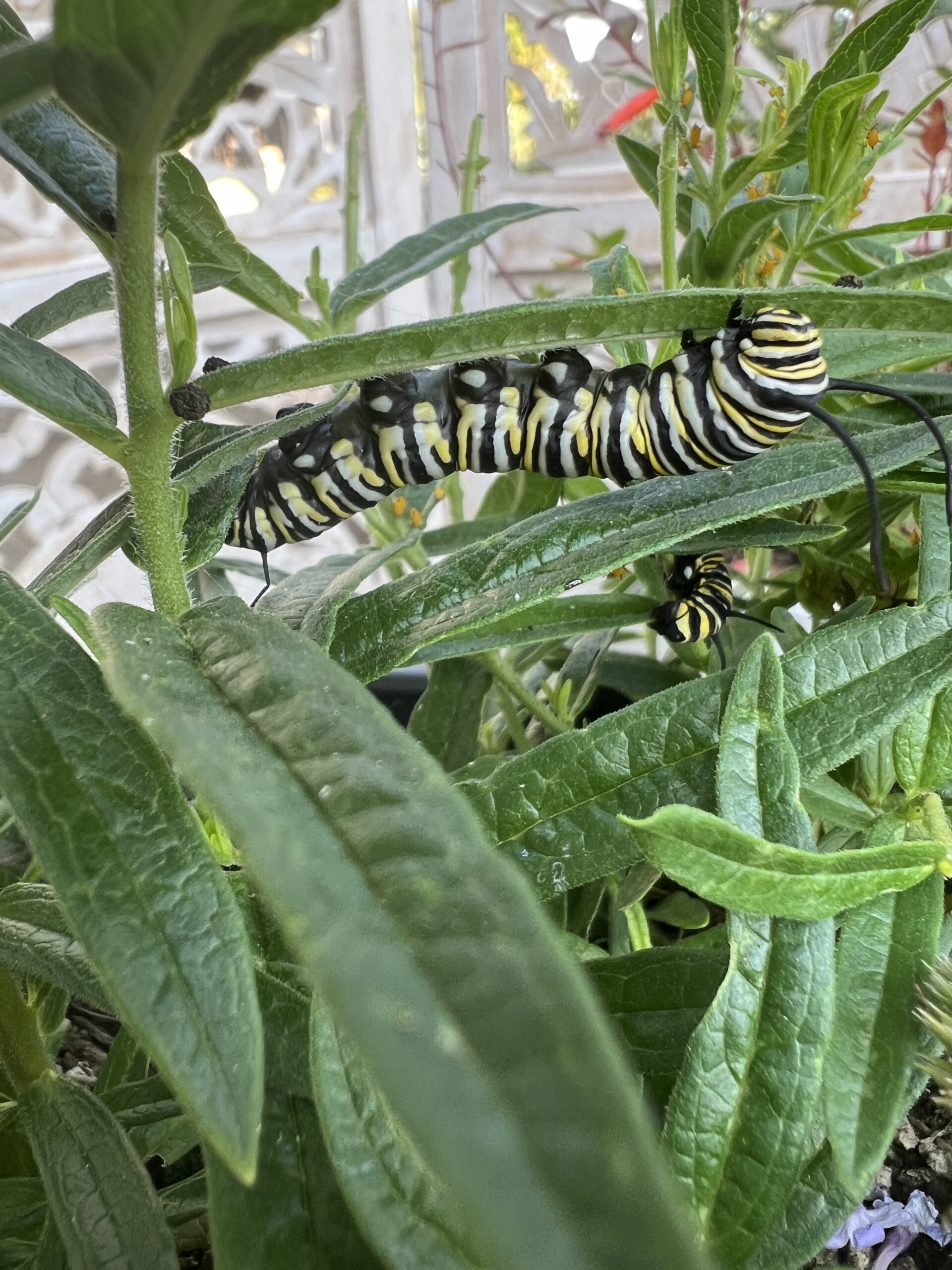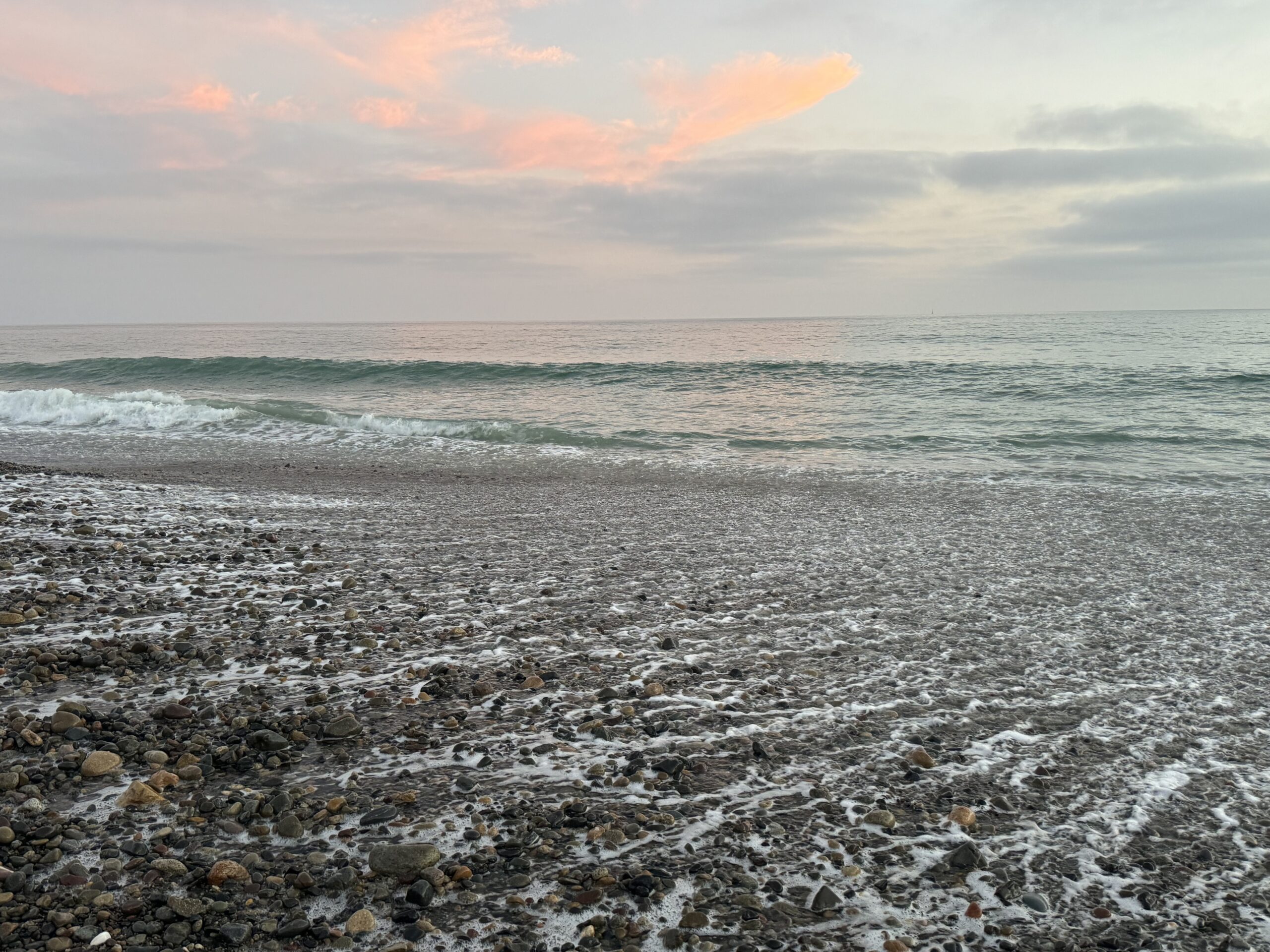
Most of our prudently executed garden activities, April through June, come home to roost in August, because last season’s rainfall plus all our late spring/early summer watering, pruning, feeding and mulching (if any), was all about preparation for the real deal… the hot, dry, seemingly relentless, August we’re in right now.
Current events, history, review, and notes
Day length may be decreasing slightly, but not yet enough to make a difference. The sun is high in the sky, shining brightly every day, and ambient temps are just downright hot. Deeply rooted natives will be fine. Cooler weather is closer than it may seem.
Watering
Here, reprinted for your convenience, is a verbatim copy of the post from last month (July 2024):
It bears repeating: Use the Deep Soak with Refreshing Sprinkles method from now through September/October.
Deep Soak: Simulate a 1-1.5“ rain event by running your sprinklers for around 20-30 minutes, in the early morning, three days in a row. Assuming your sprinkler system delivers around .75” per hour (you can Google the make and model of the sprinkler head to learn the precipitation rate), you will be applying over 1” precipitation, that will effectively penetrate 14” or so. Try to time your Deep Soak event during a cooler, overcast period, usually preceding a predicted heat wave. Watch the weather forecasts. Utilize this technique to apply the equivalent of a 1-2” rain shower event. If you are watering by hand, you can just methodically soak the soil a couple consecutive days. By dividing the total run time into three days, you avoid puddling, run-off, and subjecting the plants to a prolonged period of (excessive) ambient moisture around its leaves, which can cause disease in some natives. Depending on your location, the weather, and local conditions, you might provide your garden a Deep Soak once every 3-4 weeks, for a total of approximately 4-5 times this season. A Deep Soak saturates the soil and provides water to the roots.
Refreshing Sprinkles: In between your Deep Soak events, approximately 3-5 times per week, you should go out and have some fun. In the late afternoon/early evening, simply stand in all the right places to spray down your whole garden for 5 minutes or so. You will be wetting the leaves and moistening the soil surface, but you are not providing any water directly to the roots. Try to time it when the sun is low, so the leaves will be dry before nightfall. This technique immediately cools the whole garden and each plant at the end of a long hot day. The plants go to bed happy and invigorated, ready for the next day. You will enjoy this activity as well, as you take a few minutes to connect with your natural garden at the end of your long hot day. Turn the spray directly overhead for a quick, fully clothed, outdoor shower and you will feel what your plants are feeling.
Couple Deep Soaks with Refreshing Sprinkles all summer long. Adjust the pattern and the frequency to match your own environmental conditions depending on where you live. Enjoy.
Related to Watering
Also from July 2024:
If you do the math on the Deep Soak with Refreshing Sprinkles Method, at maximum usage, you will be applying 10-12” of supplemental water to your garden per year. Most established natural gardens use about half that amount. This is assuming you will have virtually no significant irrigation needs in the cool season, November through May. Congratulations on maintaining a truly “water efficient” garden.
For mature (established) natural gardens, the best way to test soil moisture is to dig a little inspection hole about 4-6” deep in the root zone of your plants. If the soil is dry 6” down, it’s definitely time for a Deep Soak.
Ps. The value of refreshing sprinkles cannot be overemphasized. Plants absorb water through their leaves, and these late afternoon showers really help.

Pruning
Best to hold off on most pruning.
Weeding
Always as necessary.
Mulching/Top Dress
No new foreign (imported) mulch. Allow natural leaf litter/topdress to do the job cooling the soil and retaining soil moisture.
Feeding
No fertilizers this month.

Troubleshooting – Varmints, Pests and Diseases
Control Argentine ants because they often offer safe harbor to injurious plant pests. Garden allies and beneficial pollinators are at peak population. Hopefully, the ecological balance in your natural garden gives pests the disadvantage.

Annual Wildflowers
Crumple up and leave in place the remains of last year’s annual wildflowers. Wait until October/November if you plan to sow new seed.
Adding New Plants
Keep planting, especially if it makes you feel good. We have many desert species, warm season growers, and plants that can be handled safely in summer. Also, shade plantings are possible this month. The safest season commences around September 15, so our ideal planting time is just around the corner.
Phytophilia
Our love of plants and their love for us. When I look and listen over the natural landscape or into a natural garden, I see and hear the word “sustaining.” Our plants are neither growing nor shrinking, only a few have blooms, some have set seed. Day in and day out they sit, knowing that the growing season is close, but they know it is too early to switch their message to “anticipating.”

Re-wild
The dry season is when every principle of Re-wild is on display. Since our activity in the garden is still minimal, native plants look as “natural” as they ever will, and we celebrate their natural beauty by basically leaving them alone. Just a little weeding and of course watering as needed, but mostly watching, as they mimic their botanical counterparts out yonder in the wild places. Diverse planting of native plants, arranged in naturalistic designs, tell important stories in summer.
Important Review
August reveals the fruits of our earlier gardening efforts
DS & RS = Deep Soak & Refreshing Sprinkles
RS really do help
No pruning
Weed as needed
No foreign mulch
No need to feed
Keep them good critters happy
No need to seed (too early for wildflowers)
Plant the right plants, or in the shade, or wait a short while
Plants are “sustaining”
Summer looks like Re-wild

“It ain’t wilderness, unless there’s something out there that can kill you AND eat you.”
– Doug Peacock, noted author and expert on grizzlies. He’s the real life prototype for the fictional character “Hayduke” in
Ed Abbey’s “The Monkey Wrench Gang.” (Required reading BTW)
Photo by Mike Evans
Engage
Just how wild is wild enough? Some spots, within easy access by car today, are so high, or so steep, so dry, so cold, so wet, so hot, or so remote, that they are to be reckoned with only by real wilderness experts, or in season by lucky people with the right equipment (including your car), and then only on a temporary basis. Yet we go to those places and stand in awe, beholding all the forces of nature at play, and appreciating the inhuman aspect of the place.
Most of the “hospitable” land in our region is occupied, or at least altered by humans. This is why we so deeply appreciate nature reserves and wilderness areas within the boundaries of our ever-burgeoning population, land that has been spared from the plow, the orchard, vineyard or bulldozer, and grading for buildings. This is valuable land indeed, scarce, and vulnerable to many outside pressures: alien weed species, feral animals, vandalism, untimely and too-frequent fires, litter, and even arrogant industry proposals for power lines, water pipes or other infrastructure “improvements” to crash in and barge through.
Herein lies the argument for continued preservation of natural lands, otherwise highly desirable for human (so called) “use,” as if leaving it alone is not “useful.” One of my favorite Ed Abbey quotes is, “Leave it like it was.” It’s a harder fight to preserve land that is friendly to human enterprise.
By no means considered a substitute, but actually a real partner to land preservation is land conservation through Re-wilding… retrofitting and restoring impacted land, to favor nature and natural processes. This often involves community action and is a great way to connect people to nature in a meaningful, long-term project. We can develop a “land ethic,” a term introduced by the famous naturalist and author Aldo Leopold.
And last but not least is natural gardening, the main topic at hand. This is how we effectively create and care for our own “wilderness,” alive and well in the miniature ecosystem we have made right outside our door.
Let’s engage at every level, and be extra careful if we venture into any of those “inhospitable” wild places. It ain’t all berries and cherries out there.
Hey we’ve made it till now, let’s keep makin’ it for a long while yet.
From AUGUST in the Natural Garden,
Mike Evans
Questions? Comments? Help is just one call or one email away. Call (949) 728-0685 or email (with pictures if you like) our special helpline: gardenhelp@californianativeplants.com